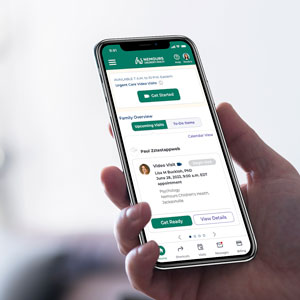Diagnosing Leukemia in Children
Making Every Second Count
There are no screening tests for pediatric leukemias. Most kids are diagnosed with childhood leukemia after an urgent trip to the doctor or emergency room (ER). By then, the cancer has grown enough to cause symptoms. Kids need immediate care — and that’s what we provide.
We meet with you right in the ER and explain what’s next. From there, you can count on needed tests and a diagnosis within 24 to 72 hours, along with emotional and mental health support.
Childhood Leukemia Symptoms
Every child is different, so the first signs of leukemia in children often vary. Childhood leukemia symptoms may include:
- Belly pain or swelling
- Bone or joint pain
- Fever
- Poor appetite and weight loss
- Swollen glands in the neck, groin or elsewhere
- Tendency to get more viral and bacterial infections than other kids
- Anemia (low level of red blood cells)
Kids who are anemic may:
- Bleed too long or too easily
- Bruise easily
- Feel tired, weak or short of breath while playing
- Look paler than usual
How We Diagnose Leukemia in Children
Childhood leukemias tend to spread quickly, but our leukemia treatment team works even faster. When diagnosing your child, we focus on the least invasive tests possible. We also start any needed supportive therapy, such as hydration or pain medicine, while you’re still in the ER.
Your child is then admitted to the hospital while our hematologist-oncologists (cancer and blood disorder specialists), lab and imaging specialists, and surgeons work as one to decide what’s needed. Your child gets tests right on-site and starts treatment within days, if needed.
To diagnose leukemia, your doctor asks questions about your child’s symptoms and performs a physical exam. Your child may then have:
Blood tests
Leukemia is a cancer of the white blood cells. Blood tests show doctors the health of these cells.
Lumbar puncture
During a lumbar puncture, we remove a small fluid sample from your child’s spine to look at under a microscope. Your child is sedated and won’t feel any pain. This procedure is also known as a spinal tap.
X-ray and other imaging tests
Imaging tests show doctors pictures of your child’s bones and other organs and tissues. These tests show doctors if your child has tumors.
Bone marrow aspiration and bone marrow biopsy
Bone marrow is the spongy part inside of bones where white blood cells are made. For these procedures, we put your child under sedation, so they don’t feel any pain or discomfort.
During a bone marrow aspiration, we use a small needle to remove a tiny amount of liquid from inside the bone. During a bone marrow biopsy, we remove a small piece of bone marrow. We remove enough material for our lab specialists to look at and do other tests, such as flow cytometry.
Flow cytometry is a special lab test that tells doctors which type of childhood leukemia — B-cell, T-cell or AML — your child has. This information helps your child’s team choose the right treatments.
Advanced genetic tests
If your child has leukemia, the next step is to find out more information. By analyzing the cancer’s genetics, we can better tailor treatments to your child. To do this, our lab specialists use advanced tests to learn more about the cancer’s DNA:
- FISH test for leukemia: FISH (fluorescence in situ hybridization) testing shows gene changes that affect how the cancer responds to certain treatments.
- Cytogenetic testing: This test takes a close look at the chromosomes (strands that contain genes) of leukemia cells. It can find things that FISH testing may miss.
Childhood Leukemia Diagnosis at Nemours: What to Expect
As your child’s test results come in, we walk you through them and what’s to come. We help you understand the pros and cons of your child’s treatment options.
You also find out about any new treatments your child may be eligible for through clinical trials. Read more about our clinical trials for children with leukemia.
24/7 Support for Children and Families
From day one, you have access to our wide variety of childhood cancer resources and support services. We want your child to feel as comfortable at Nemours as they would at home.
We offer services that make life feel as normal as possible throughout treatment. These services include:
- Care management team (your child’s primary nurse, social worker and Child Life therapist who are the familiar faces your child can count on)
- Child Life Program, which includes recreation and video games, medical and therapeutic play, pain management and mental health and nutritional support
- On-site school program
- Side effect management
Caregivers and other family members, we’re here for you, too. Our experienced nurse cancer care coordinators are on hand to answer your questions and provide education about your child’s diagnosis. From the beginning, we make sure you understand things like:
- What it’s going to be like at home during treatment
- Signs and symptoms you should watch out for and what to do
- Issues you should call us about
- What we’re monitoring when you come to the clinic


